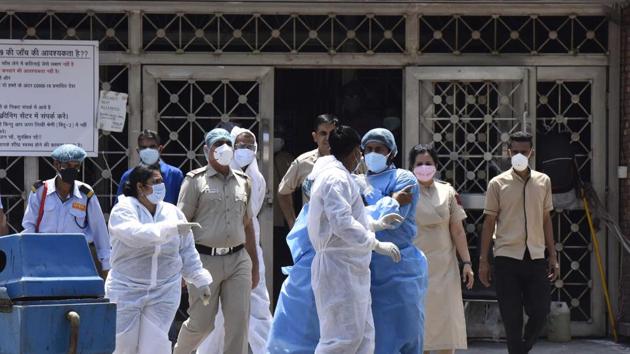Ventilation key to mitigating Covid-19 risk
The new coronavirus (Sars-CoV-2) primarily spreads when infected people expel infected respiratory droplets when they cough, sneeze, or speak and these are inhaled by others around them.
As the economy opens up, people return to work and transportation and other services resume, there is an increasing focus on optimising ventilation and managing indoor airflows to limit the spread of the coronavirus disease (Covid-19) in closed spaces.

The new coronavirus (Sars-CoV-2) primarily spreads when infected people expel infected respiratory droplets when they cough, sneeze, or speak and these are inhaled by others around them. Reversing its earlier position, the World Health Organization (WHO) recently said airborne transmission of the coronavirus is possible indoors, especially when people spend extended periods in crowded and poorly ventilated rooms.
An increasing number of outbreaks implicate the role of aerosols in the spread of infection, which can be spread by presymptomatic and symptomatic people. Aerosols are tiny droplets that stay suspended in the air for longer than large droplets.
Remodelling and modifying heating, ventilation, and air-conditioning (HVAC) systems can help lower risk of infection. “Changing settings and design of HVAC systems is useful in reducing transmission. The entry of fresh air and stale air exhaust and filteration are the two key elements. Some people have tried UV, too, but I can’t say whether he UV solution works but the other two do,” said Dr Anurag Agrawal, pulmonologist and director, Institute of Genomics and Integrative Biology, Council of Scientific and Industrial Research, Delhi.
Indoor spread
Several outbreak investigation reports have shown that Covid-19 transmission is particularly efficient in crowded, confined indoor spaces such as workplaces, restaurants, parties, shopping centres, dorms, cruise ships and transport, according to the European Centre of Disease Control (ECDC) guidance on ventilation of indoor spaces. In a study of 318 outbreaks in China, transmission in all cases except one occurred in indoor spaces, with the only case of outdoor transmission identified in this study involving two people.
Studies have shown that the “attack rate” (percentage of people who get infected in an at-risk population) depends on the amount of time spent indoors. Sixty-one people spending two and a half hours in choir practice in Washington, US, led to a 85.2% attack rate, with 52 people getting infected. A call centre in South Korea recorded an attack rate of 43.5% among 216 employees, indicating extensive transmission in a crowded indoor environment. There was no link infection risk and the distance from the index case, which indicated the amount of time spent in contact played a bigger role than proximity.
“In labs, we increase the exhaust with maximum fresh air and don’t have crowding even at full occupancy. Currently, the lab occupancy is less than half to ensure social distancing,” said Dr Agrawal.
Two outbreaks in China from recirculating air have been documented. In January, 10 people across three families got infected after having lunch in a restaurant without windows in Guangzhou, China. Their tables were more than a metre apart but those infected were sitting along the line of the air-conditioning airflow. The diners in other parts of the restaurant were not infected. People who shared a 100-minute bus ride with patient zero had a 34% attack rate (23 out of 67 passengers), but those sitting close to an open window remained healthy, with the exception of the person sitting next to the index case.
Cleaning the air
High efficiency particulate air (HEPA) filters used in aircraft and in health care settings have demonstrated good performance with particles of the Sars-CoV-2 virus size (around 70−120 nm), but their role in buildings outside of health care settings in preventing transmission of infectious diseases is unclear.
A NASA study documented HEPA filters stopped particles as small as 0.1 microns, which is the approximate size of the coronavirus, but other direct research is limited, according to a McKinsey paper titled ‘Can HVAC systems help prevent transmission of Covid-19?’ It noted that the official US ratings system specifies the efficacy of HEPA only for particles of 0.3 microns.
Among steps suggested by the McKinsey paper to make indoor air safer are configuring ducted HVAC systems to increase the rate of exchange of fresh air to reduce recirculation, enhancing the control of airflow by replacing fixed-speed fan motors with variable-speed ones, allowing smoother adjustments of airflow by using control systems sensitive to pressure, and installing high-performance air-purification systems. HVAC systems can also incorporate ionic purifiers, ozone generators, and other devices for cleaning air, it noted.
Cheaper options for airflow management are through the use of a vertical laminar for slow, steady air flow in a straight path to push out potentially contaminated air. “Vertical laminar is used in hospital ICUs, operating rooms and commercial aircraft to minimise contamination, so that the airflow systems direct air from the ceiling to the floor,” said Dr Yatin Mehra, chairman, Medanta Institute of Critical Care and Anaesthesiology, Gurugram. Simpler and cheaper changes include installing air curtains at doors and creating overpressure on the ceiling.
The takeway? Recirculated air can spread new coronavirus aerosols through HVAC systems for longer distances within indoor spaces, so there’s a need to lower risk by increasing the rate of air change, decreasing recirculation, and increasing the use of outdoor air. Still, the risk of transmission in crowded indoor remains, which makes it vital to bundle prevention measures, such as wearing masks, social distancing, washing hands, and sanitising indoor spaces
Get Current Updates on India News, Lok Sabha Election 2024 Voting live, Assembly Election 2024 Voting Live, Elections 2024, Election 2024 Date along with Latest News and Top Headlines from India and around the world.




